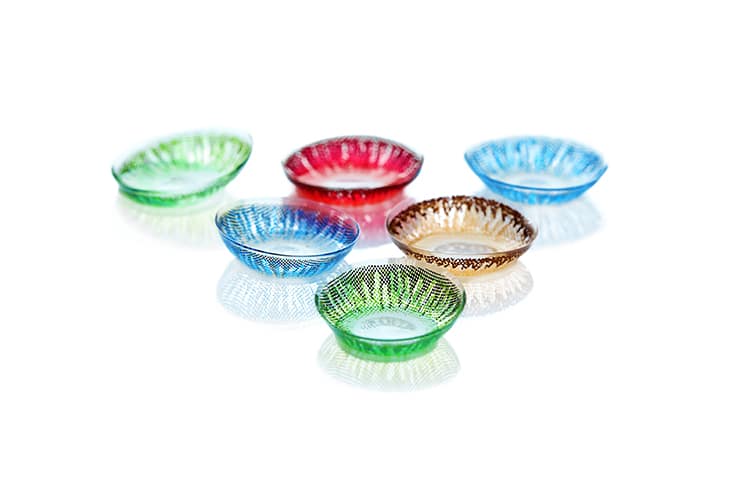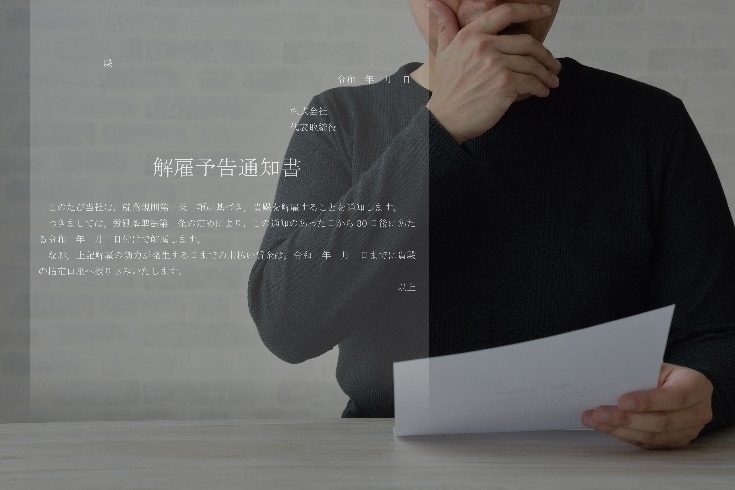What are the Issues with Discounted Sales of Contact Lenses? Explaining the Points to Note in Medical Device Sales

In 2009 (Heisei 21), a partial amendment to the Japanese Pharmaceutical Affairs Law Enforcement Order classified non-prescription colored contact lenses (commonly known as “fashion contact lenses”) as highly controlled medical devices, similar to prescription contact lenses. This was done to prevent potential health risks associated with their use.
With this amendment, fashion contact lenses also fell under the regulations of the Japanese Pharmaceutical and Medical Device Act (Japanese PMD Act), necessitating careful attention to their sales methods and advertising.
In this article, we will provide a detailed explanation on the legality of practices such as “point back” offers during the sale of fashion contact lenses, and the use of terms like “cost price contact lenses” and “wholesale contact lenses” in advertising.
Legality of Selling Colored Contact Lenses through Point-Back System
Does Point-Back Fall Under the “Premiums” Defined by the Japanese Act against Unjustifiable Premiums and Misleading Representations?
When considering the legality of point-back, we must first consider its relationship with the “Japanese Act against Unjustifiable Premiums and Misleading Representations”.
Article 2, Paragraph 3
In this Act, “premiums” refer to goods, money, or other economic benefits provided by a business operator in conjunction with the transaction of goods or services they supply, as a means to attract customers, regardless of whether the method is direct or indirect, or whether it is by lottery. This includes those designated by the Prime Minister.
The above “designated by the Prime Minister” refers to the following four types:
- Goods, land, buildings, and other structures
- Money, gift certificates, deposit certificates, lottery tickets with winnings, public bonds, stocks, commodity vouchers, and other valuable securities
- Entertainment (including invitations or preferential treatment to movies, plays, sports, travel, and other events)
- Benefits, labor, and other services
However, the following two cases are exempt from the regulations of the Act against Unjustifiable Premiums and Misleading Representations:
- Economic benefits recognized as discounts or after-sales service in light of normal business practices
- Economic benefits recognized as accompanying the goods or services related to the transaction in light of normal business practices
The issue is whether point-back falls under “discounts in light of normal business practices”. The Consumer Affairs Agency explains this in their “Q&A on Premiums” as follows:
Question
Q&A on Premiums [ja]
We are considering issuing point cards at our store and providing points that can be used as part of the payment for shopping from the next time onwards to purchasers of goods. Will the premium regulations apply?
Answer
Q&A on Premiums [ja]
Reducing or refunding the consideration to be paid to the other party in accordance with standards deemed reasonable in transactional terms is recognized as an economic benefit of a discount, and does not fall under the premiums under the Act against Unjustifiable Premiums and Misleading Representations.
According to the above answer, it seems that point-back does not fall under the premiums of the Act against Unjustifiable Premiums and Misleading Representations. However, even if it is point-back, caution is required as it will be considered as “providing premiums” if it falls under the following cases:
- When the recipient of the point-back is determined by a lottery
- When the use of points is limited (such as for travel)
- When it is carried out in conjunction with the provision of premiums
- When points that can be used as part of the payment not only at your own store but also at other stores are provided
Maximum Percentage of Point Back on Product Sale Price

If points are considered as “premiums”, they cannot exceed 20% of the transaction price. However, if they are recognized as an “economic benefit that can be considered as a discount according to standards deemed reasonable in transactional norms” and are points that can only be used for the seller’s own products/services, they do not fall under “premiums”, and there is no upper limit to the point return rate.
However, depending on the display of the selling price, it may be prohibited as an “unfair price display”, so caution is required.
Unfair Price Display
Under the Japanese Premiums and Representations Act, price displays that mislead general consumers and hinder rational choices are prohibited as “unfair price displays”.
Article 5 (Prohibition of Unfair Displays)
Business operators shall not make any of the following displays in relation to the transactions of goods or services they supply.
- (Omitted)
- Displays that are misleading to general consumers as being significantly advantageous to the other party in the transaction in terms of the price or other transaction conditions of the goods or services, and that are deemed to unfairly attract customers and hinder autonomous and rational choices by general consumers
If we organize the above Article 5, “unfair price display” can be divided into the following two cases.
- Displays that mislead general consumers into believing that the selling price of the goods or services they supply is significantly more advantageous than the actual selling price
- Displays that mislead general consumers into believing that the selling price of the goods or services they supply is significantly more advantageous than the selling price of competing business operators
About Advertisements Showing Comparison Target Prices
Under the Japanese Premiums and Representations Act, dual price displays that show a “list price” or “market price” and then display a product price that is lower than that are also regulated. When displaying the point return rate from the display price, it is necessary to ensure that there is a track record of selling the same product at the “list price” for a considerable period, or that it is correct as a “market price”.
For those who want to know more about “dual price display under the Premiums and Representations Act”, we have detailed it in the following article.
https://monolith.law/corporate/display-double-law-point[ja]
Legality of Using Terms such as “Cost Price Contact Lenses”, “Wholesale Contact Lenses”, and “Discount Contact Lenses” during Discount Sales

Regulation as Medical Devices
The principles regarding the name of the highly controlled medical device “colored contact lenses” are defined in the “Japanese Pharmaceutical and Medical Device Act” and “Standards for Fair Advertising of Pharmaceuticals and Medical Devices”, among others.
Japanese Pharmaceutical and Medical Device Act Article 66 (Exaggerated Advertising, etc.)
No person shall advertise, describe, or disseminate false or exaggerated articles regarding the name, manufacturing method, efficacy, effect, or performance of pharmaceuticals, quasi-drugs, cosmetics, medical devices, or regenerative medicine products, whether explicitly or implicitly.
Standards for Fair Advertising of Pharmaceuticals and Medical Devices Article 4 (Standards) 1 Name-related
(1) Scope of expression for the names of pharmaceuticals, etc. that require approval or certification
Except as otherwise provided, no name other than the name or generic name that has received certification based on the provisions of the Act on Securing Quality, Efficacy and Safety of Products Including Pharmaceuticals and Medical Devices (article omitted) shall be used. However, it is permissible to use only the common part of common brand products in over-the-counter drugs and quasi-drugs.
Even if it is for “fashion”, the name of colored contact lenses as highly controlled medical devices should principally use the “approved name (trade name)” or “generic name”. However, because the names can be too long or difficult for younger generations to understand in advertisements, “abbreviations” and “nicknames” are often used.
Use of “Abbreviations”
When there is no risk of misidentifying the identity of pharmaceuticals and other products based on the context of the advertisement, it is possible to use only the common part of the brand name or other sales names. For example, the following can be used:
- Sales name “Seed Eye coffret 1day UV-M” ⇨ Abbreviation “Eye Coffret”
- Sales name “Freshlook Dailies Illuminate” ⇨ Abbreviation “Freshlook”
When using “abbreviations” as described above, it is a requirement to clearly indicate this by always including the “sales name”. Furthermore, expressions of names must be made clear, and expressions in small personalitys or phrases that cannot be recognized as names are not permitted.
On the Use of “Nicknames”
It is permissible to use “nicknames” if, when viewed comprehensively from the context of the advertisement, there is no risk of misidentifying the same entity. However, it is not allowed to use something that cannot be used as a “sales name” as a “nickname”.
Also, when using a “nickname” in an advertisement, it is a requirement to make it explicit by adding the “sales name” or “common name”.
On the Use of Names such as “Cost Price Colored Contacts”, “Wholesale Colored Contacts”, and “Discount Colored Contacts”
In this case, the points to check differ depending on whether you use these terms as a “sales name” or a “nickname”.
Case of Using as a “Sales Name”
When registering names like “Cost Price Colored Contacts” as a “sales name”, the administrative side will make a judgment on approval. In this case, the following two points are important:
- The name should not cause misunderstanding about the performance and pose a risk to public health and hygiene.
- The name should maintain the dignity of the medical device.
Case of Using as a “Nickname”
In this case, there may be post-factum instructions from the administrative side, but there are three points to note:
- The “advertisement” should not damage the dignity or credibility of pharmaceuticals and other products.
- It should not fall under “unfair price display” under the Japanese “Prize Display Act”.
- It should not fall under “display emphasizing the low price”.
The Consumer Affairs Agency has published its views on “displays emphasizing the low price”.
There are cases where displays using terms that explain the reason for the low selling price or the degree of cheapness (for example, terms explaining the reason for the cheapness such as “bankruptcy product disposal”, “factory delivery price”, and terms explaining the degree of cheapness such as “significant price reduction”, “cheaper than other stores”) are made for all products or specific groups of products handled by retailers. Not all displays giving the impression of a low selling price are problematic under the Prize Display Act, but if they emphasize cheapness differently from the actual situation, they may give consumers the misconception that the selling price is low and may fall under unfair display.
Views on Unfair Price Display under the Prize Display Act [ja]
Words like “cost”, “wholesale”, and “discount” are all considered to fall under “terms that explain the reason for the low selling price or the degree of cheapness”.
In this case, what’s important is that if the selling price is almost the same as the normal price, it may fall under “unfair display”. Therefore, whether the discount amount that general consumers imagine from “Cost Price Colored Contacts”, “Wholesale Colored Contacts”, and “Discount Colored Contacts” is realized or not is the point.
If you want to know more about “regulations and penalties based on the Japanese ‘Pharmaceuticals and Medical Devices Act’ and the ‘Prize Display Act'”, we have detailed them in the following article.
https://monolith.law/corporate/hype-penalties[ja]
It is not immediately clear whether words like “cost”, “wholesale”, “discount”, or “point back” are prohibited in terms of “dignity” and “credibility”, but it is generally considered that the application of advertising regulations such as the Pharmaceuticals and Medical Devices Act can be largely avoided by using these words in the names of “monthly subscription services” or “advertising catchphrases”, rather than in the names of colored contacts themselves, which are medical devices.
Summary
In this article, we have provided a detailed explanation on the legality of ① selling colored contact lenses through point-back promotions, and ② using names such as “cost price colored contacts”, “wholesale colored contacts”, and “discount colored contacts” during discount sales, with reference to relevant laws and regulations.
Understanding the Pharmaceuticals and Medical Devices Act, related laws and regulations, and the Act against Unjustifiable Premiums and Misleading Representations (Japanese Premiums and Representations Act) requires not only specialized knowledge but also a significant amount of time and effort.
Therefore, when considering the methods of selling and advertising colored contact lenses, which are classified as highly controlled medical devices, we recommend consulting with a lawyer who has extensive knowledge and experience in this field, rather than making a decision on your own.
Category: General Corporate





















